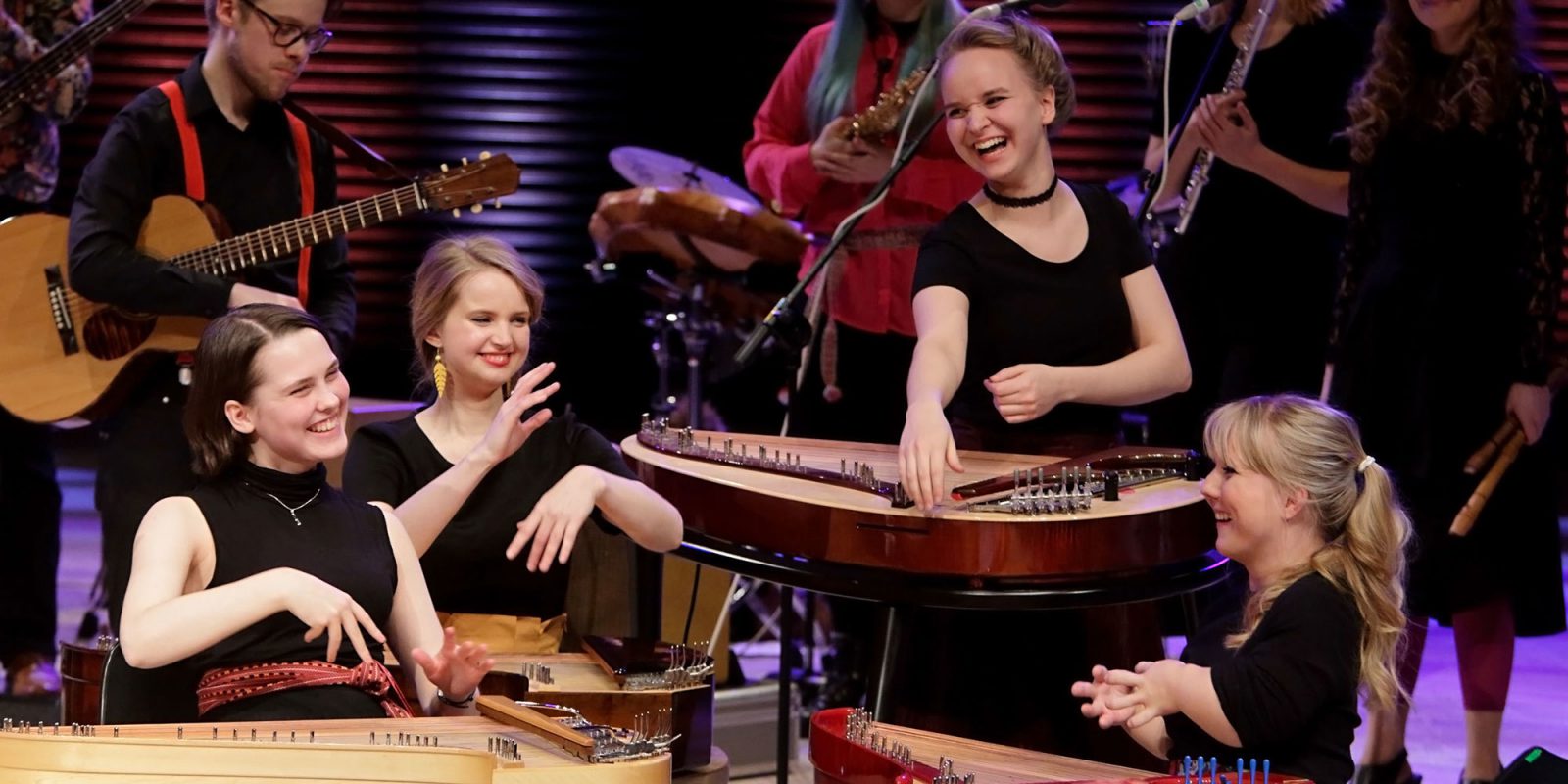
Demoscene, musical saw playing and horsemanship of the Roma – 12 new elements inscribed on the National Inventory of Living Heritage
The Ministry of Education and Culture has inscribed 12 new elements on the National Inventory of Living Heritage. The National Inventory, which adheres to UNESCO’s Convention for the Safeguarding of the Intangible Cultural Heritage, currently comprises a total of 64 elements. The Finnish Heritage Agency is responsible for the implementation of the Convention in Finland.
The ryijy tradition and making of Tommi knives were inscribed as new crafts traditions. New elements related to nature include the horsemanship of the Roma and Kalevala bone setting. New performing arts inscribed on the inventory include the playing and building of the kantele and the jouhikantele, i.e. jouhikko (bowed lyre), the National Culture Days of the Deaf, musical saw playing and puppetry. The National Inventory now also includes the bedtime story tradition, demoscene and the Living Christmas Calendar of Käpylä. The inventory also already includes food and game traditions.
The UNESCO Convention for the Safeguarding of the Intangible Cultural Heritage was adopted in 2003, and Finland ratified the Convention in 2013. The Finnish Heritage Agency is responsible for the implementation of the Convention in Finland. The UNESCO Convention also includes creating an inventory of intangible cultural heritage at the national and international levels. The resulting inventory is a tool that can be used to identify, describe and convey knowledge and information about living heritage.
The continuity of the traditions in communities is visible in the selections
The different areas of intangible cultural heritage are broadly represented in the National Inventory of Living Heritage. It includes elements from almost everywhere in Finland. The selection of an element into the National Inventory of Living Heritage is a recognition to the communities that work with the traditions. Being inscribed on the inventory makes the traditions more visible and simultaneously serves as a step towards international recognition.
Important criteria for inscription on the inventory include the significance of the intangible cultural heritage to people and the fact that the tradition in question lives and evolves in everyday life and celebrations. The inventory includes phenomena that are widely known and part of the lives of a large group of people. Some of the phenomena live on with the support of a smaller community.
‘The phenomena nominated for inscription are an important part of communities and their living heritage. They bring people together and are an essential part of their identity. All the traditions selected this time demonstrate, for their part, their continuity in the community,’ Special Advisor Leena Marsio from the Finnish Heritage Agency says.
‘It is important to note that being accepted into the inventory does not constitute an official acceptance of only one way of doing things. For example, different communities have many types of traditions related to kantele playing and puppetry, and there is room for them all,’ Marsio continues.
Finland’s nominations come from the communities themselves
European countries have different practices for compiling their national inventories. Finland has received special praise for its participatory inventorying practice. All the nominations for national inventories come from the communities that maintain the traditions.
‘Through this nomination practice, we can easily see that these traditions are so important to their communities that the communities themselves wish to bring them to the spotlight and inscribe them on the inventory. This way, the communities themselves also undertake to maintain and develop their own heritage in the future,’ Leena Marsio describes.
The elements on the National Inventory must first be inscribed on the Wiki-inventory for Living Heritage, which includes a great number of traditions that have not been selected for the National Inventory. Anyone can nominate a tradition of their community for the Wiki-inventory. The Wiki-inventory already features 175 articles submitted by over 240 agents. Finland’s Wiki-inventory is also garnering interest around the world: the website has attracted visitors from a hundred countries over the course of early 2020.
‘The Wiki-inventory brings visibility and appreciation for many of the traditions that are not selected for the National Inventory,’ Marsio says.
Next application period for the National Inventory in 2021
The National Inventory of Living Heritage is based on nominations by the Finnish Heritage Agency and the expert group on intangible cultural heritage. They are selected from among nominations submitted by communities. The nominations have also been assessed by experts and operators from various fields. The decisions on inscription on the inventory are made by the Ministry of Education and Culture.
The National Inventory is updated from time to time, now for the second time. The application period for the nominations selected this time around was in November–December 2019. The next opportunity to apply for inscription on the inventory will be in 2021 at the earliest.
Later, elements listed on the National Inventory of Living Heritage can be nominated for inscription on UNESCO’s international Lists of Intangible Cultural Heritage, for which only one national element can be nominated per year. Finland has previously nominated the sauna tradition and Kaustinen fiddle playing to UNESCO. Finland is also participating in an application that concerns the Nordic clinker boat tradition.
New elements inscribed on the National Inventory of Living Heritage in 2020
- Playing and building the kantele
- Playing and building the jouhikantele (bowed lyre)
- Playing the musical saw
- National Culture Days of the Deaf
- Ryijy tradition
- Making of Tommi knives
- Puppetry
- Bedtime story tradition
- Demoscene
- Living Christmas Calendar of Käpylä
- Horsemanship of the Roma
- Kalevala bone setting
For more information, please contact:
Leena Marsio, Senior Advisor, Finnish Heritage Agency, leena.marsio@museovirasto.fi, tel. +358 (0)295 33 6017
Links
Elements selected for the National Inventory of Living Heritage
Wiki-inventory for Living Heritage
The international UNESCO Lists of Intangible Cultural Heritage
(The Representative List of the Intangible Cultural Heritage of Humanity; The List of Intangible Cultural Heritage in Need of Urgent Safeguarding)